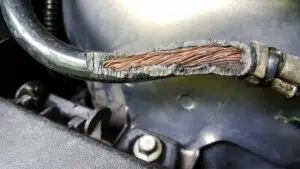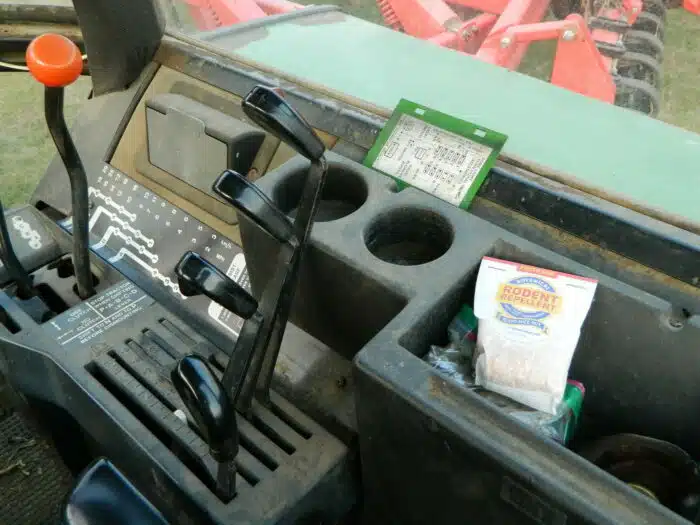How to Keep Mice Away from Your Vehicles
By : Rita Stadler
Mice in cars are a common problem, especially in the fall and winter when they’re looking for a warm place to nest. If you’ve ever had the unpleasant experience of finding one of these pests in your car, you know how important it is to prevent mice from returning to your vehicle.
Rodents can cause a lot of damage to your vehicle including gnawing on car wires, chewing up upholstery, and leaving behind droppings that can stain and ruin surfaces. They can also spread disease, which is especially concerning if they are living in a car that you and your family use frequently.
If you begin to notice signs of these critters, it’s time to take action immediately. Whether you are looking to keep mice away from your car that’s currently in storage, from a car restoration project you’re working on, or simply make sure they stay out of your every day driver, we put together some pest control tips to help.
How to Keep Mice Out of Your Car
Fortunately, there are a few things you can do to deter mice from taking up residence in your car, this includes:
- Keeping both the interior and exterior of your car clean
- Removing clutter from the interior
- Vacuuming the interior of your car regularly
- Closing the windows, sunroofs, and the hood each time it’s driven
- Using a botanical rodent repellent inside of the vehicle
- Checking the interior, the engine, and under the hood regularly to look for signs of rodents
We go into detail on each of these tips below.
First, make sure to keep the inside and outside of your car clean. Rodents are attracted to food scraps and other debris, so keeping a tidy car will help to discourage them from wanting to move in due to a lack of food sources. Getting your car washed and vacuuming the interior regularly will make this space less welcoming to pests. You should also remove clutter in the interior of the vehicle. Cars can quickly become a storage place for many items, but clutter provides a perfect hiding spot for rodents.
Each time the car is driven and parked, ensure the windows are all rolled up, the sunroofs are closed, and the hood is latched tight. This may seem like an obvious step, but it’s one that is often missed.
Next, use a botanical repellent like Fresh Cab®, in the interior of the vehicle. Fresh Cab uses essential oils and other plant-based ingredients to deter mice from the area. These pouches create a scent that’s offensive to mice due to their strong sense of smell, but not to humans. The fast-acting repellent works to keep these pests away, but also to get rid of them if there’s already a mouse infestation. Place the pouches in the trunk, under the seats, and in the glove box as needed.
Finally, remember to check your car regularly for signs of rodent activity and take action immediately if you spot any. Check the interior closely, the engine, and everywhere else under the hood. With a little effort, you can help keep mice out of your car and avoid dealing with the mess. It’s easier to prevent the problem from happening in the first place versus having to clean up and pay for rodent damages afterward.
Keep Rodents Away from Car Restoration Projects and Stored Vehicles
Is there a car that when you see it, you get a rush? It takes you back to another time and place. Restoring a classic car is like preserving a little piece of history. A little piece of history that can purr like a kitten AND roar like a lion if you do it just right. The exterior of a classic car is the first thing most people notice, but we all know some of the most deviant details can be found under the hood and in the interior.

This is true for any vehicle that is placed in storage. You must be proactive in keeping these pests away from your car while it’s stashed away. Some people swear by mothballs, dryer sheets, or peppermint oil, but those all have inconsistent results and can leave behind toxic chemicals and unpleasant odors. Common mouse traps like snap traps and glue boards have also been old standbys but they only stop the unlucky mouse that gets caught, doing nothing to stop friends and family.
The best way to stop a rodent problem, no matter the reason your car is stored, is to stop it before it begins by using a plant-based rodent repellent. Instead of luring them in with a baited trap or yummy-looking poison, repel mice away with a natural, fresh scent that overwhelms their little noses. Fresh Cab pouches will send them scurrying away before damage is done.
Keep the vehicle or car that you’re restoring clean, and check regularly for any signs of pests.
How to Get Rid of Mice in a Car
If you spot a mouse in your car or start to see or smell signs of these pests (like the smell of a dead mouse), don’t panic! You want to act quickly, however, before the problem leads to an infestation. There are a few simple steps you can take to get rid of them.
First, try to locate the mouse and see if it has made a nest. Check everywhere in the interior of the vehicle, check the car engine compartment, the air filter area, around the car battery, and underneath the car to find any signs of a nest. Sometimes driving the car, taking it through a car wash, and honking the horn can cause the pests to leave. This way, if you find a nest, hopefully it will already be empty.
If you do find a mouse nest in the car, gently remove and dispose of it by following these CDC guidelines. If you find a dead rodent in the vehicle, follow the same CDC guidelines to pick up and dispose of the rodent.
If you can’t seem to find the issue but are still seeing signs of pests throughout the car, it could be time to take it to a mechanic for help.
Once you have gotten rid of the issue, you should follow the same steps that we listed above to prevent it from happening again. Clean the car regularly, both interior and exterior, to remove anything that would make the vehicle more welcoming to these pests. Place Fresh Cab pouches, found in-store or online, throughout the car and replace them every 30 days, or when the scent has started to fade. Finally, check the car regularly for any signs of mice and act on the problem if any signs are spotted.
If you have a camper or RV, follow our tips on keeping mice out of these larger vehicles.







